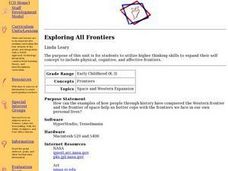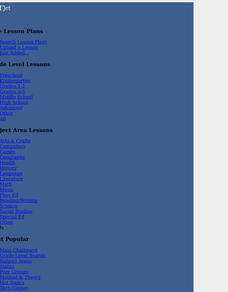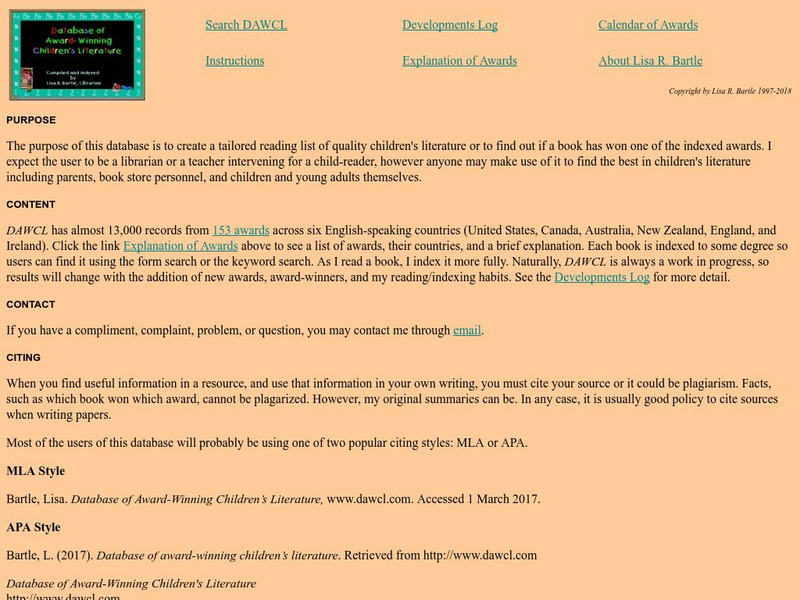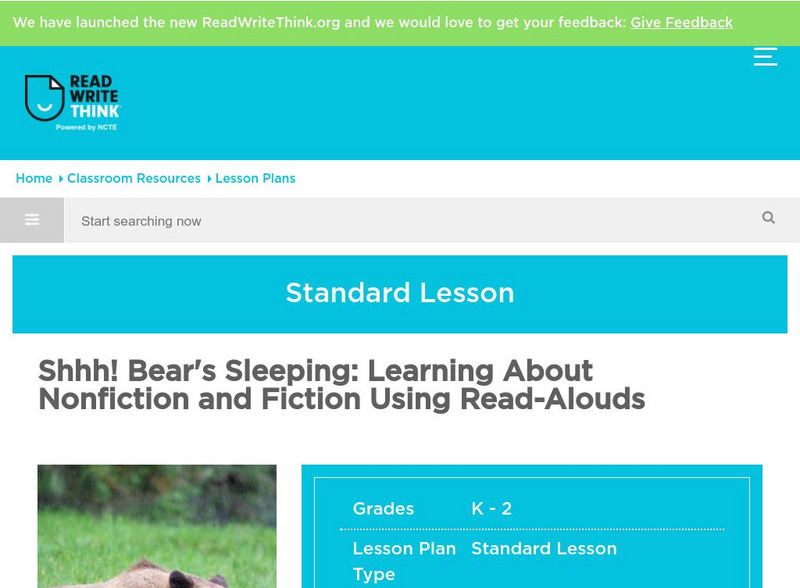Curated OER
Exploring All Frontiers
Young scholars utilize higher thinking skills to expand their self concept to include physical, cognitive, and affective frontiers. The teacher create activities which allow students to use raw data and primary sources, as well as...
Curated OER
Using Southeast Asian Folktales to Teach Reading and Writing
Young scholars use maps to locate the countries of Thailand, Vietnam and Cambodia. In groups, they compare and contrast the three countries in regard to their culture, morals and values. They read various examples of folktales and write...
Curated OER
Happy Birthday, Dr. Seuss!
Students examine the life and works of Theodor Seuss Geisel. In groups, they compare and contrast the stories, characters and illustrations he used. They complete a book review on one of the books and share them with other students in...
Curated OER
Pigs Don't Wear Pants
Students engage in the writing process and differentiate between what is real versus fantasy. They identify the rhyming words and follow the steps of writing to complete the page for the class book. The prompt is checked looking for...
Curated OER
Poetry
Fifth graders preview different poetry selections form different poets to narrow their criteria for a favorite poem. They use the web and written sources to find a favorite poem and then give an oral interpretation of their poem in class...
Curated OER
Analysis of Character in a Short Story
Ninth graders examine a character from the short story, John Steinbeck's, "Flight." students respond to questions about the story and illustrate the character's journey.
Curated OER
The Stinky Cheese Man and Other Fairly Stupid Tales
Sixth graders demonstrate the ability to process and evaluate content from a variety of sources and apply comprehension skills to the material read. They organize information for practical use and design and develop an informational...
Curated OER
Hats
Students listen to a read aloud of "Hats, hats, hats," by Ann Morris focusing on the variety of hats. They play a file folder game categorizing hats from the book.
Curated OER
Most Wanted Villians
Students review the characteristics of various characters in fairytales. As a class, they review the story details and create a concept map using a software program. They create their own wanted poster of the villians in the fairytale to...
Curated OER
Comparing Fairy Tales
Students read and review common fairy tales and come up with a list of characteristics from them. The Teacher models filling out either a compare & contrast graphic organizer comparing two fairy tales.
Curated OER
Haiku Poetry
Third graders write their own haiku poem after a lesson on the history and format of a haiku. In this poetry lesson plan, 3rd graders write a haiku with the correct lines and symbols.
Curated OER
Nursery Rhymes
Students recall details of nursery rhyme read by teacher, identify main characters, and demonstrate knowledge of poem by creating concept map about story that includes title, clip art, and changes in font and color.
Curated OER
Ode to a Nightingale
Learners read poems about Tuberculosis by John Keats. Using the poems, they identify similies, metaphors, personification and imagery. In groups, they make connections about the author's outlook on life and how his disease impacted his...
Curated OER
Students Information And Interest Survey
In this personal information instructional activity, students fill out this form to give details about their personal history, prior experiences and preferences. This could be used for information gathering or as an icebreaker activity.
Curated OER
Mice Squeak; We Speak
Students create a poster. In this vocabulary lesson, students use vocabulary words such as squeak, creak, squeal, squawk and quack to identify the sounds and noises of each word. Students come up with rhyming words and create a word...
Curated OER
Twenty-one Balloons
Fifth graders determine what the Newbery Award is and why it is importance. They examine a number of Newbery Award winning books and listen to a book talk about William Pene DuBois', Twenty-One Balloons while watching a PowerPoint...
Curated OER
Make Way for Ducklings
First graders use skills to collect, organize, and interpret data. They compare and contrast two stories, Make Way for Ducklings and Chibi: A True Story From Japan. Students create a duckling.
Curated OER
Autobiographical Postage Stamp
Students design a postage stamp that communicates to the world who they are, what they hope to be, what they are good at, and factual information. They use, "My Great Aunt Arizona" by Gloria Houston as a model for a biography.
Read Works
Read Works: 3rd Grade Lesson: Science Fiction
[Free Registration/Login Required] A lesson in which learners use the book Commander Toad and the Intergalactic Spy by Jane Yolen to learn about the characteristics that define science fiction. Lesson includes direct teaching, guided...
Other
Read Print Publishing: Full Text Literature
Full text and free online versions of plays, essays, fiction, nonfiction, poetry and short stories. Search by favorite author or title and immediately find your text of choice.
Other
Database of Award Winning Children's Literature
This is a phenomenal resource. It allows the user to create a reading list of quality children's literature based of choices such as reading level, type of book, genre, ethnicity, gender, etc. In addition, one can determine if a book won...
Harold D. Underdown
Writing Young Adult and Children's Fiction and Fantasy
A great article concerning writing children's literature, especially in the area of fantasy or science fiction. The author provides information concerning how to develop characters, creating literary elements, and discusses some pitfalls...
ReadWriteThink
Read Write Think: Shhh! Bear's Sleeping: Learning About Nonfiction and Fiction
Students explore the distinction between the fiction story Bear Snores On and the nonfiction book Every Autumn Comes the Bear.
Annenberg Foundation
Annenberg Learner: Artifacts and Fiction: Workshop in American Literature
This workshop, which is divided into eight segments, teaches how to use primary source artifacts from a variety of genres to support the teaching and learning of specific pieces of literature. The genres include visual arts, political...

























